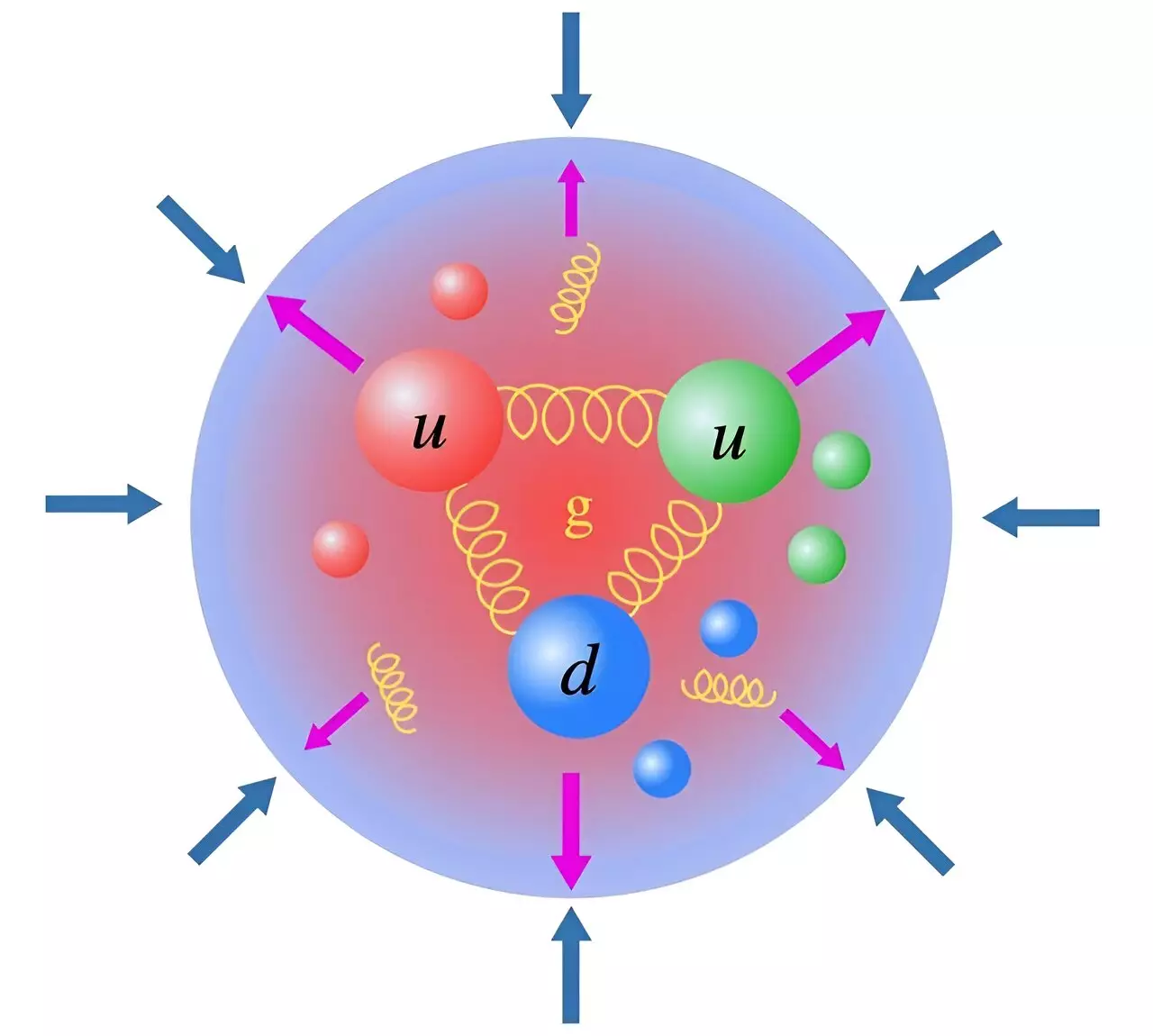Quantum chromodynamics (QCD) serves as the theoretical foundation for examining the forces operating within atomic nuclei, including the constituent protons and neutrons. One of the key areas of investigation in QCD revolves around how quarks and gluons are confined within nucleons, specifically protons and neutrons. Mathematically, the forces within nucleons can be likened to the force of gravity, but there are quantum effects, such as the “trace anomaly,” that deviate from this pattern. These quantum effects play a crucial role in maintaining the equilibrium between the inward pressure inside nucleons and the cohesive forces that bind them together.
Recent studies have demonstrated that the trace anomaly can be quantified through the production of charmonium, a subatomic particle generated at research facilities like the Thomas Jefferson National Laboratory and the future Electron Ion Collider. In addition to experimental measurements, researchers can leverage QCD to calculate the trace anomaly theoretically. By marrying experimental data with theoretical predictions, scientists can gain valuable insights into the distribution of mass and pressure within hadrons – particles composed of quarks and gluons.
Both hadrons and superconductors exhibit similar confinement patterns for particles within a defined volume, underpinned by a common mathematical framework. This parallel extends to the cosmic scale, where phenomena like the cosmological constant and dark energy influence energy and pressure equations governing the expansion and acceleration of the universe. Moreover, scientists are able to not only experimentally measure the trace anomaly but also compute it using lattice QCD, enabling a direct exploration of the intricate dynamics of quantum chromodynamics.
The interplay of energy, pressure, and confinement manifests across various physical systems, ranging from the microscopic realm to cosmic dimensions. By unraveling the connections between these fundamental concepts, physicists can construct a cohesive narrative that explains diverse phenomena in the field of physics. Through the lens of quantum chromodynamics, researchers are able to forge a unified understanding that transcends traditional boundaries, shedding light on the intricate workings of the universe.


Leave a Reply